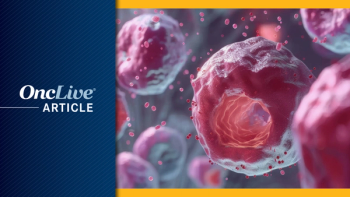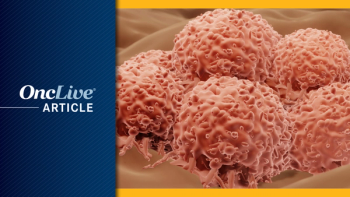
Meta-Analysis Highlights Nab-Paclitaxel Activity Across Subgroups of Breast Cancer
Treatment with nanoparticle albumin-bound nab-paclitaxel showed encouraging activity across different subgroups of patients with breast cancer, according to the results of a meta-analysis of several clinical trials.
Treatment with nanoparticle albumin-bound nab-paclitaxel (Abraxane) showed encouraging activity across different subgroups of patients with breast cancer, according to the results of a meta-analysis of several clinical trials.
Nab-paclitaxel was found to be the most active in patients with more aggressive types of breast cancer. The cumulative data show a pathologic complete response (pCR) rate of 41% in triple-negative breast cancer (TNBC) and 54% in HER2-positive disease. Moreover, an analysis of randomized comparisons against conventional taxane regimens showed nearly 40% higher odds of achieving pCR with nab-paclitaxel. These findings were reported at the San Antonio Breast Cancer Symposium.
The efficacy and tolerability of nab-paclitaxel in the treatment landscape of breast cancer has generally remained somewhat unclear, despite the established role of neoadjuvant chemotherapy in this setting.
“Our study demonstrates that nab-paclitaxel is an effective cytotoxic drug in neoadjuvant treatment of breast cancer, especially in patients with aggressive disease subtypes, like TNBC and HER2-positive tumors,” Kunwei Shen, MD, a medical oncologist at Shanghai Ruijin Hospital in China, and colleagues concluded in a poster presentation. “Exchange of neoadjuvant nab-paclitaxel for conventional taxanes could significantly improve the probability of pathologic complete response with generally reasonable toxicities.”
To expand upon existing data and inform decision making, Shen and colleagues performed a systematic review and meta-analysis of published literature, including abstracts from oncology meetings. The primary objectives were to assess the efficacy of nab-paclitaxel in unselected patients and in intrinsic breast cancer subtypes and to compare the efficacy and toxicity of nab-paclitaxel to conventional taxane regimens in the neoadjuvant therapeutic setting for breast cancer.
The search identified 21 studies and a cumulative total of 2,357 patients, including 3 randomized clinical trials. The investigators used a uniform definition of pCR (ypT0/is ypN0) to evaluate the efficacy of nab-paclitaxel.
Overall, neoadjuvant therapy with nab-paclitaxel resulted in a pCR rate of 32%. Across the studies of unselected patients, the pCR rate ranged from 4% to 53%.
Among the intrinsic breast cancer subtypes, nab-paclitaxel attained the lowest pCR rate in patients with hormone receptor-positive (HR+)/HER2-negative breast cancer (14%). That contrasted with a pCR rate of 41% in the triple-negative subtype and 54% among patients with HER2-positive breast cancer. Further analysis of the HER2-positive subgroup showed that nab-paclitaxel resulted in a higher pCR rate for patients with hormone receptor-negative tumors compared with hormone receptor-positive tumors (61% vs. 41%).
The 3 randomized trials comparing nab-paclitaxel and conventional taxane formulations accounted for the vast majority of patients included in the analysis (2,053). Pooled results from the 3 trials showed that patients randomized to neoadjuvant therapy with nab-paclitaxel had a significantly higher odds ratio for pCR compared with conventional paclitaxel (Abraxane) or docetaxel (Taxotere) (OR 1.383, 95% CI 1.141-1.76, P = 0.001). Across the 3 trials, the pCR rate favored nab-paclitaxel versus the comparator by odds ratios that ranged from 1.27 to 1.58.
With respect to the relative toxicity of nab-paclitaxel versus conventional taxanes, the 3 randomized trials showed that rates of neutropenia and leukopenia were numerically higher with nab-paclitaxel but did not differ significantly from the rates observed with standard paclitaxel or docetaxel. Liver enzyme elevation (ALT/AST) also occurred more frequently with nab-paclitaxel, the difference was not significant compared with standard taxane therapy.
All grades of peripheral neuropathy occurred significantly more often with nab-paclitaxel (OR 2.090, 95% CI 1.1016-4.302, P = 0.045). The incidence of grade 3 peripheral neuropathy also was significantly higher with nab-paclitaxel (OR 3.766, 95% CI 2.324-6.100, P <0.001). Hypersensitivity reactions occurred more often with paclitaxel than with nab-paclitaxel, despite premedication (especially grade ³3 hypersensitivity, P = 0.02).
Other common nonhematologic toxicities occurred with similar frequency in patients treated with nab-paclitaxel or conventional taxane therapy, including nausea, vomiting, fatigue and diarrhea.

























































































